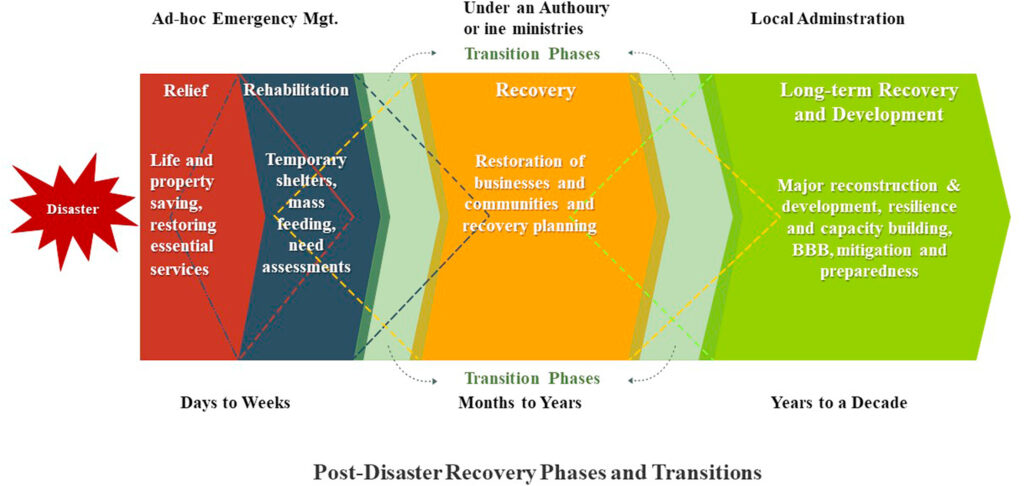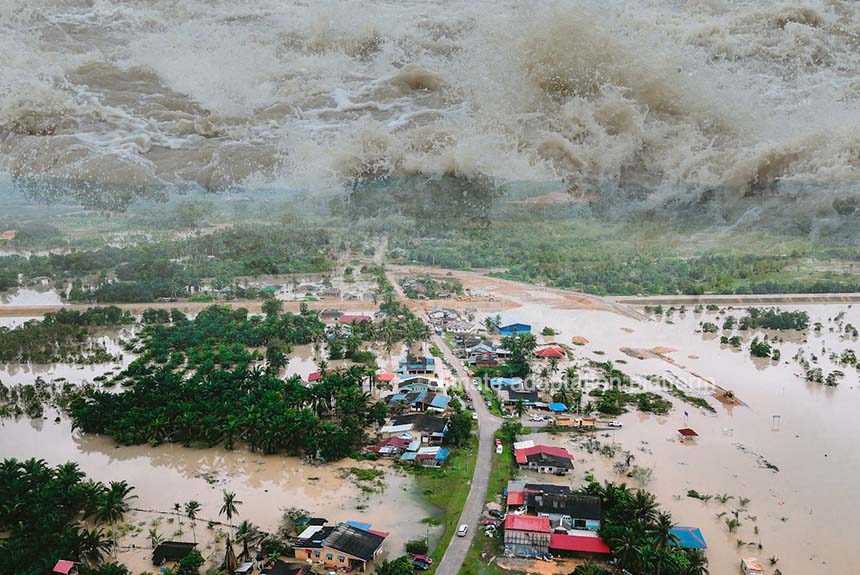Sri Lanka is highly vulnerable to climate-related disasters, experiencing frequent and severe impacts from cyclones, floods, and landslides.
Published in the International Journal of Disaster Risk Reduction on ScienceDirect, a research article by Rizwan Akbar Ali and Sandeeka Mannakkara, both esteemed faculty members of the Department of Civil and Environmental Engineering at the University of Auckland, New Zealand, provides a thorough analysis of the challenges hindering long-term recovery across different post-disaster recovery (PDR) phases in Sri Lanka.
The study, “Phased post-disaster recovery challenges: 2016–2017 floods and landslides in Colombo and Kalutara, Sri Lanka”, is a significant contribution to the field as it investigates the transition of recovery from one phase to the subsequent phases of PDR using the 2016 and 2017 floods and landslides in Sri Lanka’s two affected areas of Columbo, Sri Lanka’s capital and largest city, and Kalutara as case studies.
Floods are a worsening natural disaster made worse by climate change
According to the paper, the average number of natural disasters is increasing globally per decade, and climate change is worsening its impacts. Among these natural disasters, floods have become the most common disaster in 2022. They contribute to a significantly high number of deaths and economic losses. The floods in 2022 resulted in 7954 deaths and US$44.9 billion in economic losses; both impacts were greater than the annual average of 5195 deaths and US$41.6 billion in economic losses for the period of 2002–2021.
The impacts of floods and other natural disasters on the death tolls and economic losses globally, particularly in poor countries, make imperative the need for a well-planned recovery process.
However, post-disaster recovery (PDR) is a dynamic, complex, and lengthy process; depending on the event’s scale, recovery can take up to twenty-five years, and how a community progresses through the different phases is still poorly understood in disaster management scholarship.
In developing countries where there are limited resources and capacity, PDR is even more challenging and primarily restricted to the response and rehabilitation phases, focusing on life-saving and humanitarian activities and does not progress to later stages such as the recovery and long-term reconstruction repair and development, which is critical for the long-term recovery and sustainability of the areas and communities affected.
Common issues in these countries include lack of capacity, limited community engagement in recovery, top-down approaches that exclude local knowledge and input, missed opportunities for building resilience, governance issues, and community resettlement issues.
The study fills the gap by evaluating the PDR process from the occurrence of a disaster event through subsequent phases to the long-term phase. It seeks answers to the following questions: What were the major challenges in each PDR phase that negatively affected the recovery progress?
Secondly, how do the recovery transitions occur in the subsequent phases? It is worth investigating each phase’s issues, challenges, and opportunities and how they contribute to long-term recovery through a case study approach to obtain lessons for future Post Disaster Recovery planning.
Lead author Rizwan Akbar Ali presents the key findings of the study:
- Response Phase: Lack of communication and coordination mechanisms among key stakeholders.
- Rehabilitation Phase: Limited capacity and resources of local authorities.
- Recovery and Long-Term Reconstruction: Issues with disaster governance, data collection and management, and low inter-agency collaboration.

“These factors, especially prevalent in Kalutara compared to Colombo, have continually hindered the PDR process. Our study also found that only one transition occurred, from response and rehabilitation to recovery, with no evidence of a transition to long-term reconstruction and development.”
“The insights gained will be invaluable in planning future post-disaster recoveries, helping to anticipate issues and ensure effective planning. We aim to address these impediments in each PDR phase, ensuring a smooth transition into long-term recovery.”
The lessons from the study findings indicate that the recovery transition fails to obtain necessary attention from PDR planning and decision-making stakeholders. In theory, the concept of recovery transition is well developed with international agencies. However, the study shows that state ministries, departments, and local NGOs lacked a practical understanding of the recovery transition.
Learn more about the research study by clicking the link in the “Source” section below.
Source:
Ali, R.A. and Mannakkara, S. (2024, August 3). Phased post-disaster recovery challenges: 2016–2017 floods and landslides in Colombo and Kalutara, Sri Lanka. Science Direct. International Journal of Disaster Risk Reduction. Retrieved from https://www.sciencedirect.com/science/article/pii/S2212420924004904#abs0010https://doi.org/10.1016/j.ijdrr.2024.104728



Leave a Reply